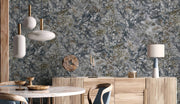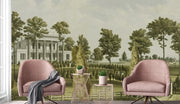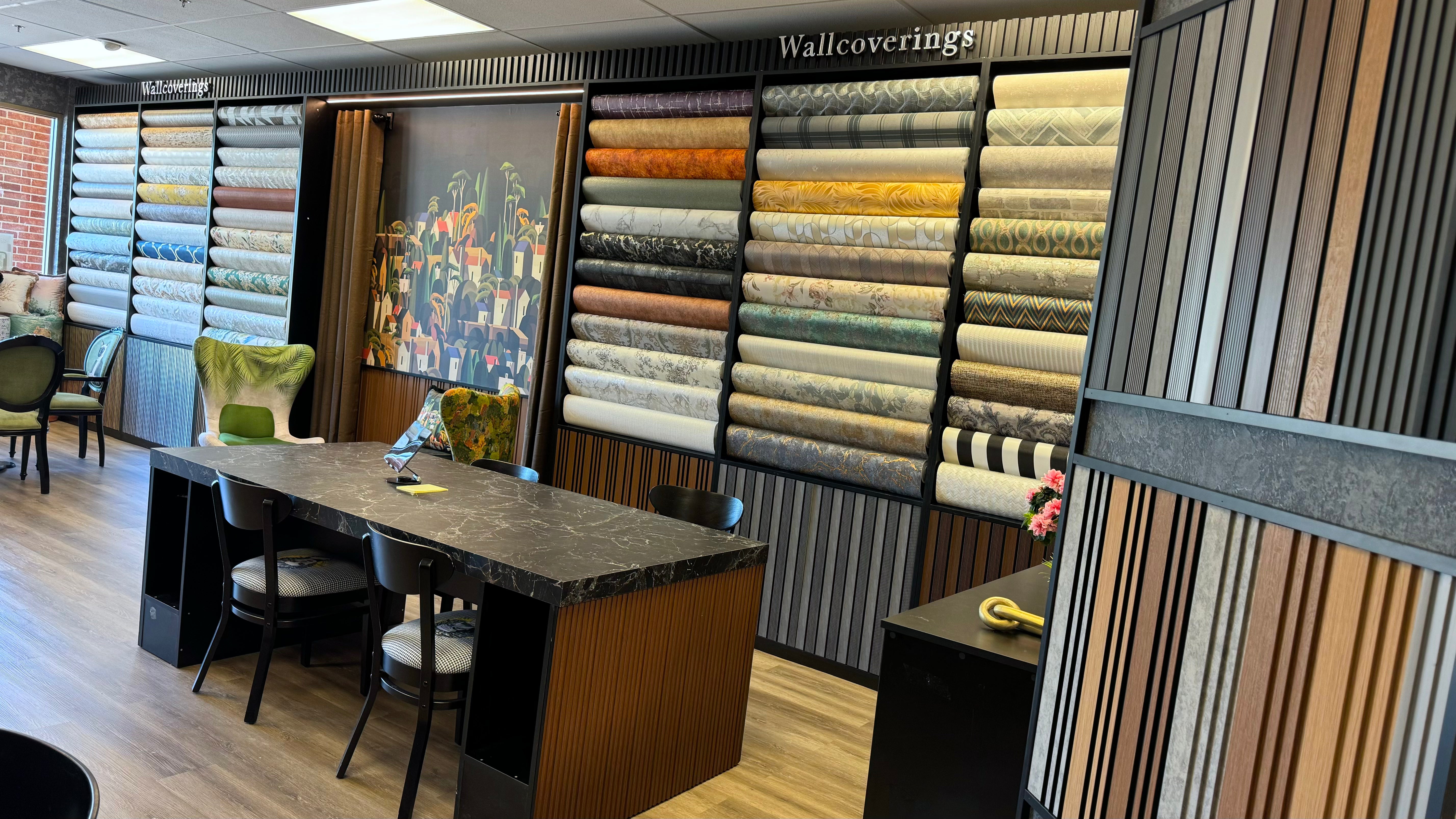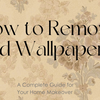How to Remove Wallpaper? - A Comprehensive Guide by Walloro
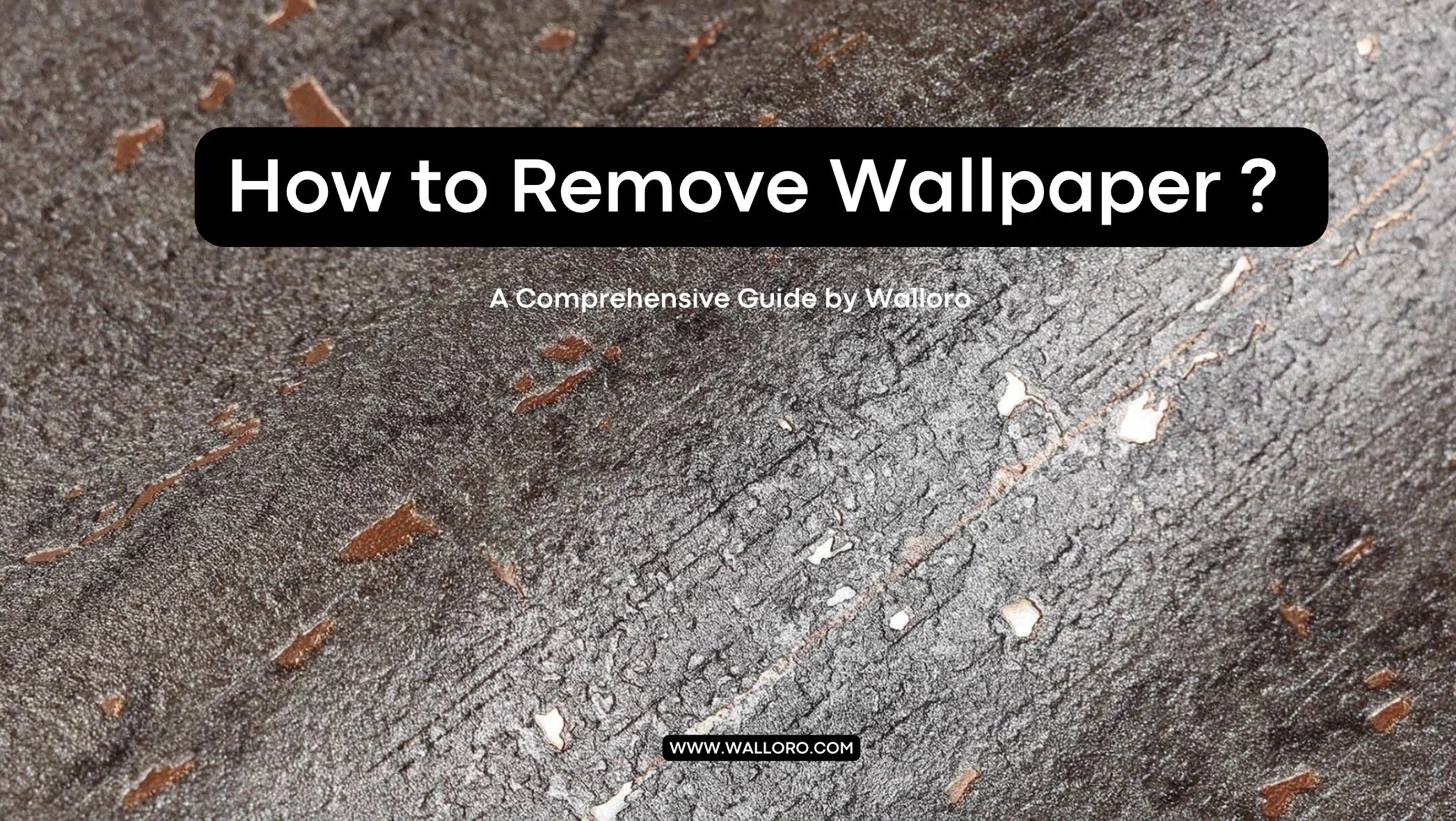
Removing wallpaper can seem daunting, but with the right approach and tools, it becomes a manageable task. Whether you're preparing your walls for a fresh coat of paint or new wallpaper, understanding the proper techniques is crucial. At Walloro, we believe in providing our customers with the knowledge to maintain and enhance their living spaces.
Why Remove Wallpaper?
Over time, wallpaper can become outdated, damaged, or simply no longer align with your aesthetic preferences. Removing it allows you to update your space, repair any underlying wall issues, and start anew with a design that suits your current taste.
Common Challenges in Wallpaper Removal
Several factors can complicate the wallpaper removal process:
-
Multiple Layers: Older homes may have several layers of wallpaper, making removal more challenging.
-
Stubborn Adhesive: Some wallpapers are applied with strong adhesives that are difficult to loosen.
-
Wall Damage: Improper removal can lead to damage to the underlying wall surface.
Understanding these challenges helps in selecting the appropriate removal method and tools.
Tools and Materials You'll Need
Before you begin, gather the following tools:
-
Wallpaper Steamer: Ideal for loosening adhesive on large areas.
-
Putty Knife or Scraper: For peeling off wallpaper and scraping residual adhesive.
-
Scoring Tool: Useful for perforating the wallpaper to allow solutions to penetrate.
-
Spray Bottle: For applying removal solutions.
-
Protective Gear: Gloves and safety glasses to protect your hands and eyes.
Step-by-Step Wallpaper Removal Process
1. Prepare the Room
-
Remove Furniture: Clear the area to prevent damage and create space to work.
-
Protect Flooring: Use drop cloths or plastic sheeting to protect floors from water and debris.
-
Turn Off Electricity: If working near electrical outlets or switches, turn off the power to avoid accidents.
2. Test the Wallpaper Type
Determine whether your wallpaper is strippable, peelable, or traditional. This will influence the removal method:
-
Strippable Wallpaper: Can be peeled off in large sections.
-
Peelable Wallpaper: Involves removing the top layer and then treating the backing.
-
Traditional Wallpaper: Requires soaking and scraping.
3. Apply a Removal Solution
For traditional wallpapers:
-
Commercial Wallpaper Remover: Follow the manufacturer's instructions for application.
-
DIY Solutions: Mix equal parts water and white vinegar, or use a fabric softener and water solution. Apply generously to the wallpaper and allow it to soak for 15-20 minutes.
4. Score the Wallpaper (If Necessary)
If the wallpaper is stubborn:
-
Use a scoring tool to perforate the surface. This allows the removal solution to penetrate and loosen the adhesive more effectively.
5. Steam the Wallpaper
For tough adhesives:
-
Use a wallpaper steamer to apply heat to small sections of the wallpaper. The steam softens the adhesive, making it easier to peel away.
6. Scrape Off the Wallpaper
-
Begin at a seam or edge and gently peel the wallpaper away using a putty knife. Work slowly to avoid damaging the wall surface.
7. Remove Residual Adhesive
-
After the wallpaper is removed, there may be leftover adhesive. Use a mixture of water and vinegar or a commercial adhesive remover to clean the walls.
8. Repair Wall Damage
-
Inspect the wall for any damage. Fill holes or imperfections with spackle, sand smooth, and allow to dry before painting or applying new wallpaper.
Tips for a Successful Wallpaper Removal
-
Work in Small Sections: This prevents the removal solution from drying out before it has a chance to work.
-
Use the Right Tools: A wallpaper steamer can be particularly effective for stubborn adhesives.
-
Be Patient: Rushing the process can lead to wall damage.
-
Protect Surrounding Areas: Cover baseboards, trim, and outlets to prevent water damage.
Walloro's Commitment to Quality
At Walloro, we understand the importance of both aesthetics and functionality in wallcoverings. Our luxury embossed wallpapers are designed not only to enhance the beauty of your space but also to be durable and easy to maintain. If you're considering updating your walls, explore our collections at walloro.com.

